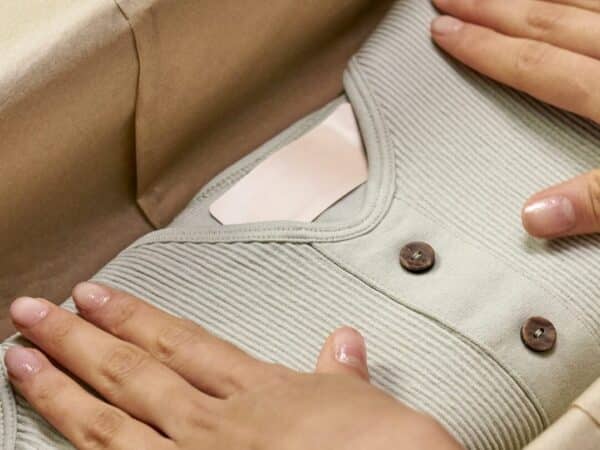Choose the right packing materials
Packing materials such as bubble wrap, foam pads, and wrapping paper will not just protect your items, but will also make the process of packing easier, quicker, and more organized. – Bubble wrap – This is a great packing material for protecting smaller items as it’s lightweight and easy to use. To use bubble wrap for packing, simply place your item inside the wrap and seal the open ends. For heavier items, you may want to double wrap. – Foam pads – Foam pads are great for protecting larger items such as furniture and other breakables. They can be cut to size and are easy to use. – Wrapping paper – This is ideal for wrapping up larger items such as paintings, mirrors, and other fragile items that require extra protection. It’s also a good idea to label wrapped items with their description.
Label all your boxes
Labeling every single one of your boxes will save you valuable time and energy when it comes to unpacking. Organizing your boxes according to room will also help you remember where each box goes. To label your boxes, you can either use a pen, or label gun. If you choose the latter, you can use the same label for multiple boxes. For large, heavy items such as your bed frame, dining table, and TV, you may want to consider buying custom boxes. This will help ensure your items are adequately protected in transit.
Pack fragile items with care
Fragile items such as crystal, china, and other delicate items should be packed and transported with extra care. A great way to ensure these items are adequately protected is by placing them inside a sturdy cardboard box. Next, you can line the bottom of the box with a layer of crumpled newspaper or paper towels to protect the contents from moisture. Finally, place your item inside a plastic bag and seal the bag to keep it clean and prevent it from getting wet. This will help prevent your fragile items from getting damaged while in transit. Remember, it’s better to be safe than sorry!
Organize your packing process in advance
It may seem counterproductive to plan your packing process in advance, but it can actually make your life a lot easier and less stressful. To plan your packing process, all you need is a large table covered with newspaper and some sticky notes for labeling. Start by grouping items together based on what room they belong in: For example, Living room, Bedroom, etc. Next, place each item in the appropriate room and wrap it up in newspaper. Finally, label each item with a sticky note and place it in the appropriate box for easy transport. This will make unpacking a breeze as you can simply unpack your items as you would normally.
Pack heavy items in small boxes
For heavy items such as books, clothes, and towels, it’s best to put them in small boxes. Not only will this help save you money but it will also make the process of unpacking a lot easier. For larger items such as your bed frame, dining table, and TV, you may want to consider buying custom boxes. This will help ensure your items are adequately protected in transit. For smaller items such as toiletries, underwear, socks, and other small items, it’s best to use plastic tote bags. These are easy to stack, take up less space, and are great for organizing smaller items. For larger items such as pillows, blankets, and sheets, it’s best to use laundry bags. When packing these items, be sure to use plenty of padding to prevent them from getting bent out of shape.
Start packing early
Moving home can certainly be a lengthy process, but by packing early, you can help make the experience a lot less stressful. Start packing as early as you can and this will give you more time to organize and properly pack your items. This will also give you more time to clean and declutter your home, which will make the move feel like a lot less of a pressure. Not to mention, packing early will also help reduce your stress levels, which will leave you feeling ready, energized, and ready for the move.
Don’t underestimate the importance of cushioning
Cushioning is an essential part of packing, especially if you’re planning to move fragile items. There are many different types of packing materials that can be used to protect your items, such as newspapers, bubble wrap, and other packing peanuts. Remember, it’s better to be safe than sorry. A few handfuls of newspaper can go a long way to protect your items and help prevent breakages, so don’t be afraid to use plenty!
Use wardrobe boxes for your clothes
If you’re moving with your clothes, you’ll want to use wardrobe boxes. These are specially designed to keep your items safe and organized, so you can rest assured your clothes will arrive at your new home looking fresh and clean. Also, it’s a good idea to keep all your items neatly folded and organized, so you can easily find what you’re looking for once you arrive at your new home.
Pack a “first night” bag
A “first night” bag is a great idea when moving home. This is a small bag full of essential items such as toiletries, underwear, socks, a toothbrush, and other items you might need the first night in your new home. This will help you feel more at home and less stressed when moving day arrives. It’s also a great idea to pack a bag full of snacks and drinks, so you can relax and enjoy your first night in your new home.
Make a list of all packed items
This is a great idea for two reasons. First, it will help you remember what items you’ve packed and where they’re located. Second, if anything gets lost or misplaced in transit, you’ll have a handy list to refer to. You can either write the items down on a paper, or use a packing app to help you keep track of everything.


